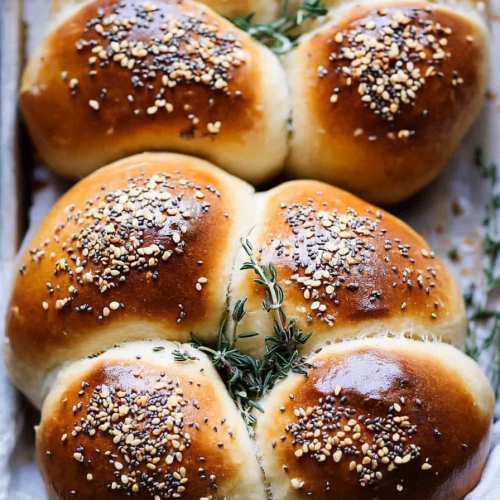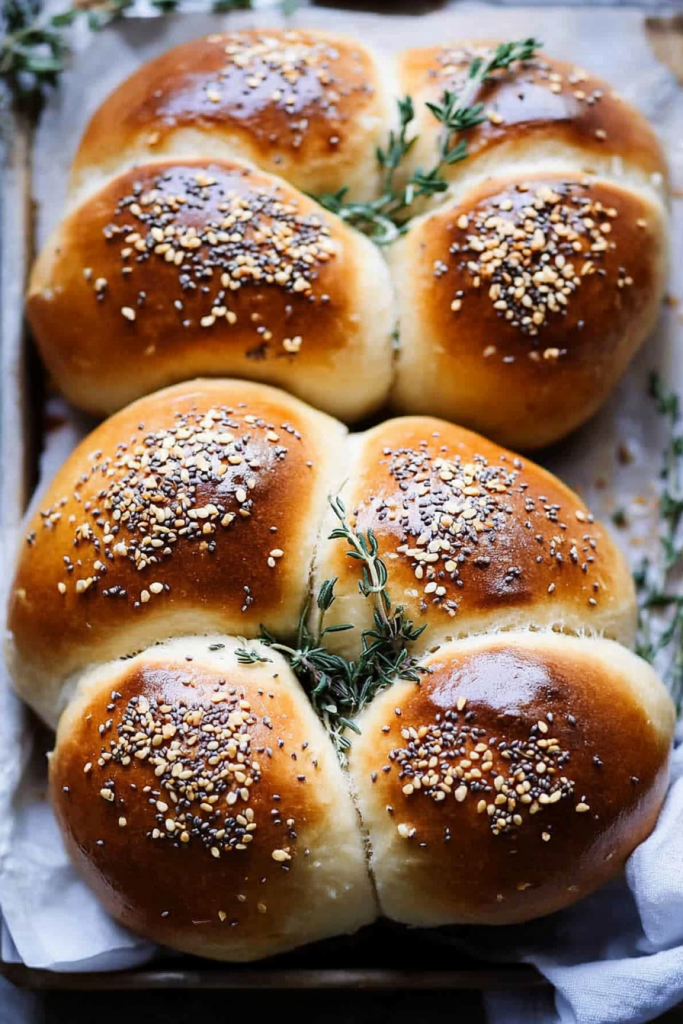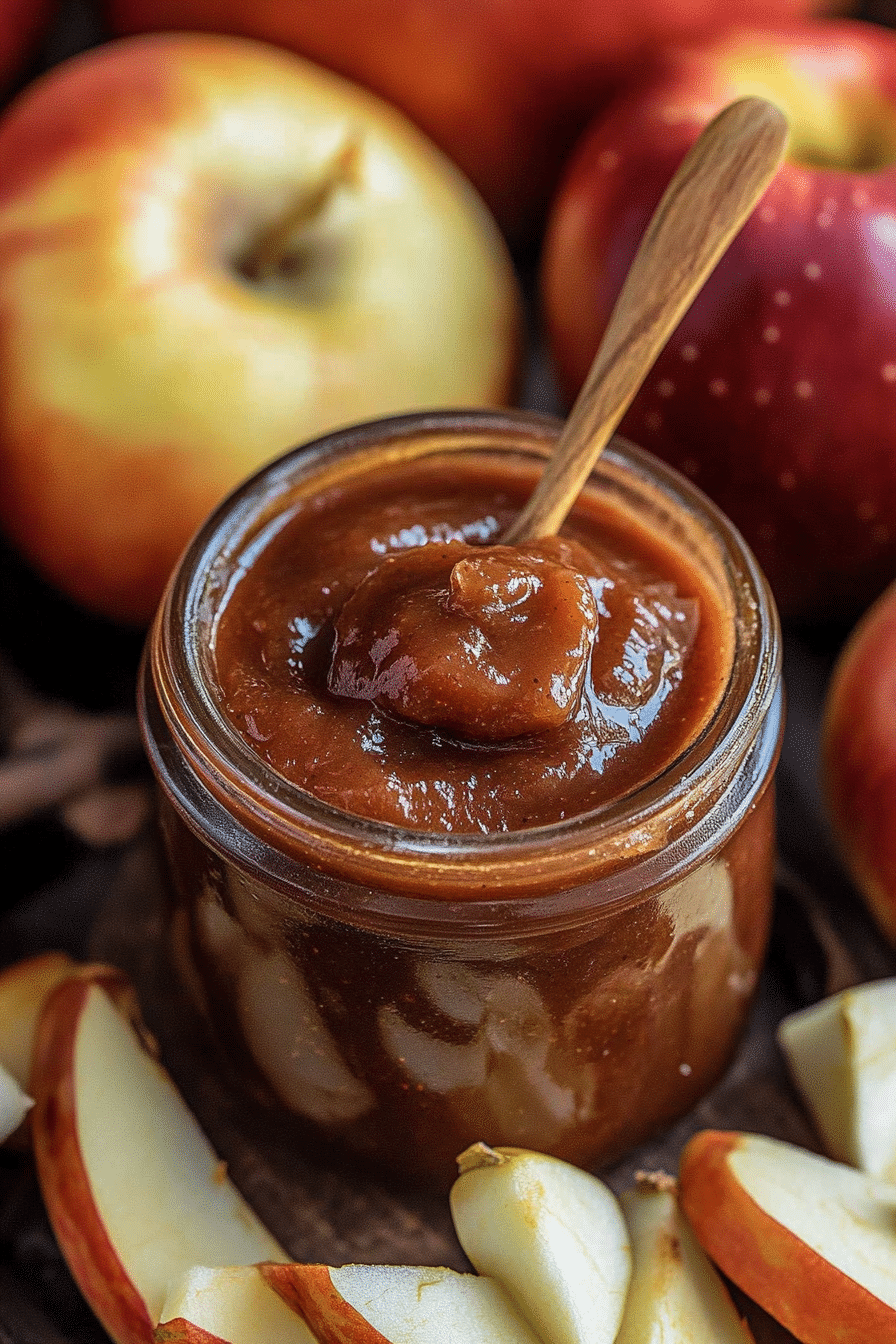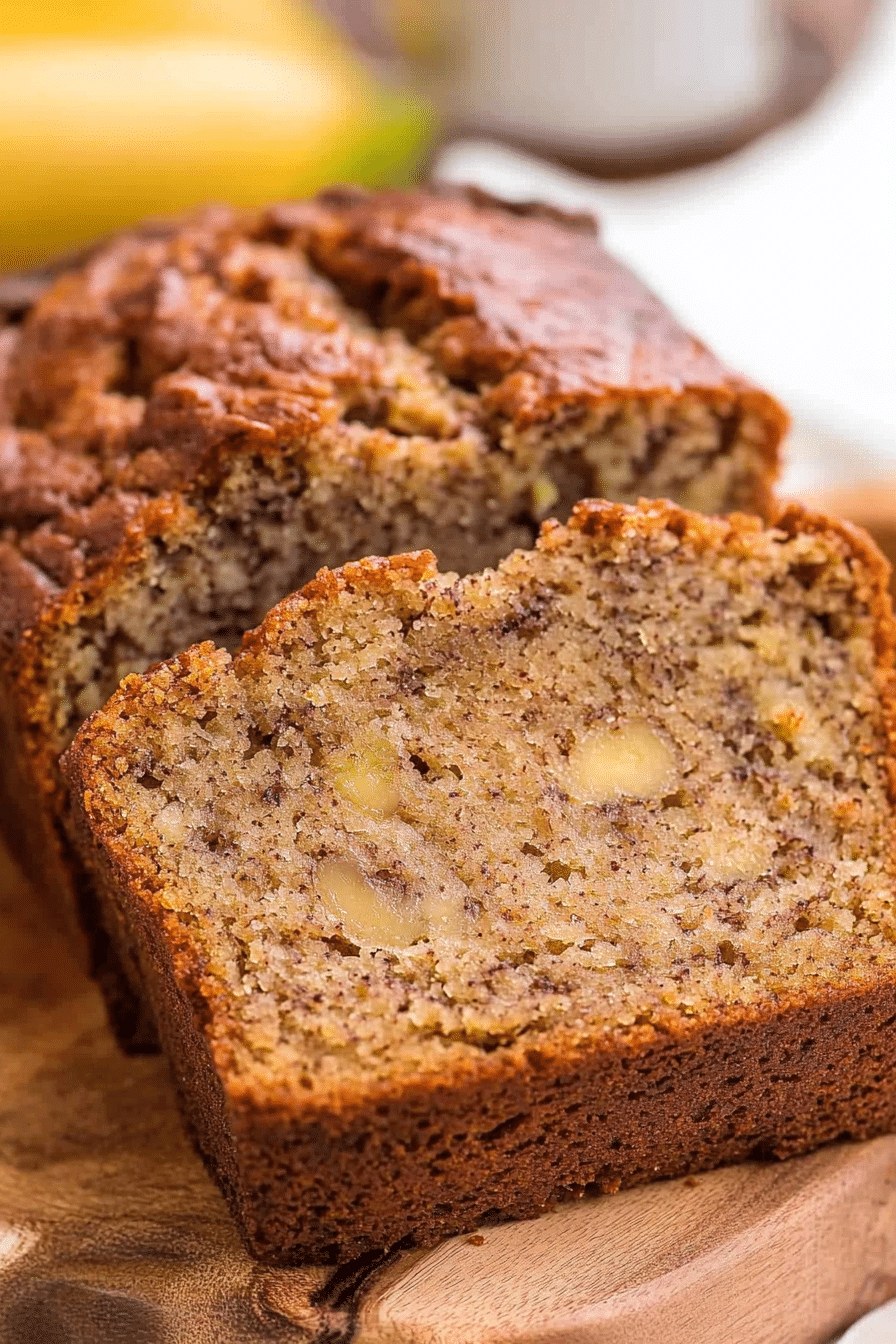Pastry lovers, rejoice! If the thought of pillowy, aromatic, hand-tied bread interrupts your thoughts, you’re in for a treat. Let’s dive into why Rosemary Seeded Bread Knots are a must-try addition to your baking repertoire. These delightful knots are not just aesthetically pleasing; they bring a burst of flavorful, herbal notes that transport your senses to a quaint Mediterranean village, with aromas wafting through an open kitchen window. But it’s not just about sensation; it’s about the splendid process of crafting something that garners admiration at any dinner table. Get ready to explore how these humble knots can transform your bread-making journey. To further enhance your bread-making skills, you might want to check out some Bread knot recipes and tips.
Ingredients List
To create these irresistible Rosemary Seeded Bread Knots, you’ll need the freshest ingredients to ensure a dough that rises flawlessly and emits an inviting aroma. Here’s what you’ll need:
- 3 cups all-purpose flour
- 1 cup warm water (about 110°F)
- 1 packet active dry yeast
- 2 tablespoons olive oil
- 2 tablespoons honey
- 1 1/2 teaspoons salt
- 1 tablespoon fresh rosemary, finely chopped
- 2 tablespoons mixed seeds (such as sesame, poppy, or sunflower)
- Extra flour for dusting
- Coarse sea salt for sprinkling

Each of these ingredients plays a pivotal role. The flour creates the robust framework, while honey and olive oil enrich the dough, giving it a smooth, silken texture. For a deeper understanding of incorporating seeds, explore Seeds in baking: benefits and uses. Fresh rosemary, chopped to release its oils and fragrance, elevates the bread, while mixed seeds impart a nutty, satisfying crunch.
Timing
Baking bread is an art that requires patience, yet the process is as rewarding as it is therapeutic. Here’s how the time unfolds for making Rosemary Seeded Bread Knots:
- Prep Time: 20 minutes
- Resting/Rising Time: 1 hour 30 minutes
- Baking Time: 25–30 minutes
- Total Time: Approximately 2 hours 20 minutes
Efficiency in baking begins with an understanding of these timings. Prepare ahead by setting your ingredients out and letting your yeast proof while you organize the kitchen—yielding optimal readiness when the dough is prepared for its folding and resting sequences. Access Comprehensive Bread Baking Tips from King Arthur Baking to further enhance your bread-baking experience.
Step-by-Step Instructions
Step 1: Activate the Yeast
Start by combining the warm water and honey in a large bowl, stirring until the honey dissolves completely. Sprinkle the yeast on top and let it sit for about 5–10 minutes until it looks frothy. This step is crucial to wake the yeast from its dormant state, allowing it to expand and become active as a leavening agent. Understand more about the importance of these ingredients by exploring The Science Behind Gluten in Bread Baking.
Step 2: Mix the Dough
In the same bowl, add olive oil, salt, and chopped rosemary to the yeast mixture. Slowly add the flour, one cup at a time, mixing well after each addition. You’re looking for a dough that pulls away from the edges of the bowl and feels slightly sticky. Use your hands to bring it together into a cohesive ball, reflecting the starting texture of great bread. For some inspiration on herb use, consider taking a look at The Health Benefits of Rosemary.
Step 3: Knead the Dough
Transfer the dough to a lightly floured surface. Knead it for about 8–10 minutes. If the dough sticks, gently sprinkle more flour to the surface; however, be cautious not to over-flour. The kneading process encourages gluten development, bestowing elasticity and strength necessary for perfect texture.
Step 4: First Rise
Place the dough in an oiled bowl, cover it with a damp towel, and set it in a warm area to rise for about 1 hour, or until doubled in size. This is a great time to prepare for aesthetic aspects, like chopping additional rosemary or readying extra seeds.
Step 5: Shape and Bake
Once risen, punch down the dough gently to release air. Divide it into equal sections, rolling each into a rope and tying into a simple knot. Lay them on a baking sheet lined with parchment paper. Brush each knot lightly with olive oil, sprinkle with seeds, and finish with coarse sea salt. Bake at 375°F for 20-25 minutes or until golden brown. The smell at this stage will be irresistible!
Nutritional Info
Each Rosemary Seeded Bread Knot carries an array of nutrients, balancing taste and health. The incorporation of olive oil and seeds enriches the dough with healthy fats, while the bread is modest in sugars thanks to honey, presenting a wholesome treat. Below is a general profile for a single knot:
- Calories: 180 kcal
- Carbohydrates: 26g
- Protein: 4g
- Fat: 7g
- Fiber: 1.5g
Loaded with selenium and manganese from the seeds and antioxidants from the rosemary, these knots not only please the palette but also supplement your diet with beneficial compounds. Keep in mind that variations in ingredients may affect nutritional content slightly. Explore how different seeds can enhance your baking in How to Properly Incorporate Mixed Seeds in Baking.
Healthier Alternatives
If you’re seeking to adapt this recipe for dietary preferences or health goals, several options can enhance or modify traditional Rosemary Seeded Bread Knots while maintaining their essence.
- Whole Wheat Flour: Substitute half of the all-purpose flour with whole wheat flour for increased fiber content. This adjustment adds a delightful nuttiness to the bread’s flavor without detracting from the fluffy texture.
- Gluten-Free Flour: Opt for a high-quality gluten-free blend if gluten sensitivity is a concern.
- Natural Sweeteners: Switch honey with maple syrup or agave nectar, offering a lower glycemic impact without losing sweetness.
- Plant Oils: Replace olive oil with avocado or coconut oil. Each brings unique fatty acid profiles and mild flavor shifts.
Exploring these alternatives allows for flexibility and customization while ensuring that the aroma and enjoyment remain high. Each variation provides diverse health benefits along with a unique twist to every bite.
Serving Suggestions
The versatility of Rosemary Seeded Bread Knots means they fit seamlessly into various meal occasions.
- On-the-Go Lunch: Pair with a Caprese salad or roasted vegetables for a light yet satisfying midday meal.
- Dinner Accompaniment: Serve alongside hearty soups or stews. The herb-infused bread is perfect for soaking up savory broths.
- Brunch Crowds: Enhance your brunch table by offering these alongside omelets or frittatas, where the hint of rosemary complements egg dishes beautifully.
-

Rosemary Seeded Bread Knots
Delicious and fragrant Rosemary Seeded Bread Knots, perfect for snacking or serving with soup.Prep : 10 Total : 25 minutesIngredients
Main Ingredients
- 1 cup Warm Water
- 2.25 teaspoon Active Dry Yeast
- 1 teaspoon Salt
- 2.5 cup All-Purpose Flour Plus more for dusting
- 2 tablespoon Olive Oil
- 1 tablespoon Fresh Rosemary Chopped
- 1 tablespoon Mixed Seeds Sesame, poppy, flax
Instructions
Preparation Steps
- In a large bowl, dissolve yeast in warm water. Let stand for 5 minutes until foamy.
- Add salt, olive oil, rosemary and gradually add the flour, mixing until a soft dough forms.
- Turn the dough out onto a floured surface and knead for 5-7 minutes until smooth and elastic.
- Place the dough in a greased bowl, turning to coat. Cover and let rise in a warm place for 1 hour, or until doubled in size.
- Punch down the dough and divide it into 12 equal pieces. Roll each piece into a rope about 6 inches long. Tie each rope into a knot and place on a baking sheet lined with parchment paper.
- Brush the knots with olive oil and sprinkle with mixed seeds. Let rise for another 20 minutes.
- Preheat oven to 375°F (190°C). Bake for 20-25 minutes, or until golden brown.
- Let cool slightly on a wire rack before serving.
Notes
Serve warm with butter or your favorite dipping sauce.💬Featured Comments
“Impressed! Clear steps and so flavorful results. Perfect for busy nights.”
· — ThomasOwner ReplyAppreciate the feedback — this made my day!“New favorite here — family favorite. crowd-pleaser was spot on.”
· — GabrielOwner ReplyThanks for making it! I'm thrilled you liked it.“Super easy and turned out amazing! My family asked for seconds. Saving this one.”
· — MiaOwner ReplyLove hearing this — enjoy!“This sweet treat was absolutely loved — the bright really stands out. Thanks!”
· — LeoOwner ReplyThanks a ton for sharing your result!“Made it tonight and wow — comforting! Will definitely make Rosemary Seeded Bread Knots again.”
· — VictoriaOwner ReplySo happy it worked out. Appreciate you trying it!“Packed with flavor and so simple. Exactly what I wanted from Rosemary Seeded Bread Knots.”
· — ZachOwner ReplyThank you for the kind words — glad this helped!












